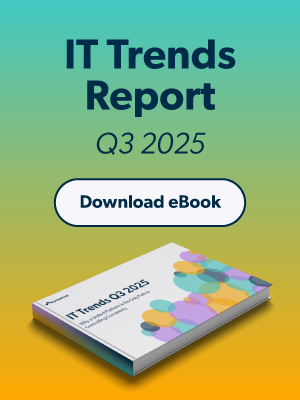Updated on February 14, 2025
Traditional access control methods often fail to meet today’s complex security demands. Fine-Grained Access Control (FGAC) provides a solution to organizations in need of a more precise and flexible way to manage user access.
So, what is FGAC? How is it different from traditional access control methods, and why is it important for modern IT systems? This article breaks it down what FGAC is, its feature, benefits, and challenges, and offers some real-world scenarios where FGAC shines.
What Is Fine-Grained Access Control?
Fine-Grained Access Control (FGAC) is an advanced method of managing access to sensitive information or systems by enforcing rules based on detailed attributes or conditions. Unlike traditional, or “coarse-grained” access control, which relies heavily on broad roles such as “manager” or “employee,” FGAC evaluates multiple attributes simultaneously to make nuanced access decisions. These attributes may include:
- User Information (e.g., role, department, seniority)
- Device Type (e.g., mobile, desktop, IoT device)
- Location (e.g., geographic area or IP address)
- Time of Day (e.g., granting access only during business hours)
Key Principles of FGAC
Fine-Grained Access Control (FGAC) operates on the foundation of precision and adaptability, ensuring access decisions align closely with an organization’s unique security requirements. By leveraging detailed attributes, FGAC provides a more dynamic and secure approach compared to traditional role-based models.
When in place FGAC employs:
- Attribute Evaluation: Decisions are made based on a diverse set of criteria, taking into account specific attributes such as user roles, device type, location, and time of access.
- Context-Awareness: Access is dynamically adjusted according to various contextual factors, such as whether a user is operating from a secure network, the sensitivity of the requested data, or even recent activity patterns.
This detailed control provides immense flexibility, making FGAC vital for mitigating insider threats, ensuring compliance, and establishing robust cybersecurity frameworks.
Features of Fine-Grained Access Control
FGAC stands out for its ability to tailor permissions at a granular level. Some of its defining features include:
Granular Access Decisions
Access permissions in FGAC depend on multiple conditions instead of static roles. For example, a financial analyst could access sensitive data only from the corporate network using a company-issued laptop.
Dynamic Policies
FGAC adapts to real-time changes in context. For instance, access may be revoked automatically if a user’s session is flagged as suspicious or if they connect using an untrusted network.
Scalability
FGAC seamlessly integrates into complex organizational hierarchies, supporting enterprises with diverse environments, multiple departments, or global footprints.
Integration with Identity and Access Management (IAM)
FGAC enhances IAM tools like AWS, Okta, and Azure Active Directory, strengthening their ability to control resource permissions with precision.
Benefits of Fine-Grained Access Control
Why should organizations adopt FGAC? Here are some compelling benefits:
Enhanced Security
FGAC minimizes risks by granting users access strictly to what they need, when they need it—dramatically reducing the attack surface.
Compliance Assurance
Regulations such as GDPR, HIPAA, and CCPA require precise access controls. FGAC makes compliance easier by providing auditable policies that are tightly aligned with data privacy requirements.
Operational Flexibility
By providing precise control over who can access specific resources and under what conditions, FGAC ensures that access remains flexible, secure, and tailored to meet changing organizational needs and diverse user scenarios.
Reducing Privilege Creep
Over time, users accumulate more permissions than necessary (a security risk referred to as “privilege creep”). By ensuring only current and relevant permissions are applied, FGAC eliminates this issue.
Challenges of Implementing Fine-Grained Access Control
When implementing FGAC organizations should be prepared to address the following hurdles:
Policy Complexity
Defining granular policies requires thorough planning and a deep understanding of organizational workflows. Poorly defined policies can result in access bottlenecks or security gaps.
Dependency on Accurate Attribute Data
FGAC’s effectiveness hinges on the availability of accurate and up-to-date attribute data. Outdated or incorrect information can compromise security or limit functionality.
Performance Considerations
Real-time access evaluation—core to FGAC—requires computing resources. Organizations must ensure their infrastructure can handle the performance demands without delays or downtime.
High Initial Costs
Implementing FGAC may involve investing in new tools and integrating them with legacy systems. However, the long-term benefits of enhanced security and compliance often outweigh the initial expense.
How To Implement Fine-Grained Access Control
Successfully implementing FGAC requires a structured approach. Here are five actionable steps:
Step 1: Identify Critical Resources
Start by determining which systems, applications, or datasets require strict and granular access control. Focus on high-risk assets, such as sensitive customer data, financial information, trade secrets, or intellectual property.
Consider the potential impact of unauthorized access to these resources and prioritize them accordingly. Engaging with key departments like IT, compliance, and security will ensure all critical assets are accounted for.
Step 2: Define Attributes and Policies
Develop clear, detailed policies using relevant attributes—such as user roles, devices, locations, time of access, and even operational context.
For example, you might restrict certain users to read-only access during specific time windows or allow full administrative privileges only when using secure company devices. Collaborate with stakeholders, including department heads and compliance officers, to ensure the policies align with both security requirements and business objectives.
This step ensures a balance between safety and operational efficiency.
Step 3: Deploy FGAC Tools and Platforms
Incorporate your key IAM infrastructure to enforce fine-grained access control (FGAC) policies. These platforms offer built-in support for dynamic and attribute-based access controls, allowing you to automate enforcement based on predefined rules.
Ensure the selected tools integrate seamlessly with your existing IT infrastructure and provide sufficient scalability to grow with your business. Proper deployment also requires training your IT team to manage and maintain these tools effectively.
Step 4: Test and Monitor Policies
Conduct extensive testing to ensure your access policies function as intended and do not inadvertently block legitimate users or create security gaps.
Use real-world scenarios to simulate different types of access requests and identify potential flaws. Once policies are in place, continuously monitor access logs and system activity to detect anomalies, such as unauthorized access attempts or unusual patterns.
Regular audits should be conducted to ensure policies are working as expected.
Step 5: Continuously Refine
Access control is not a one-time task—it requires ongoing refinement.
As your organization grows, regulatory requirements evolve, and new technologies emerge, your FGAC policies must adapt accordingly. Regularly review and update policies to reflect changes in user roles, organizational structures, and external threats.
Be sure to create a feedback loop with your staff to identify any challenges or gaps in the system so adjustments can be implemented proactively. Consistent refinement ensures your FGAC framework remains effective and aligned with your organization’s needs.
Best Practices to Consider
- Start small by implementing FGAC for select resources, then scale gradually.
- Regularly audit and update policies to reflect organizational changes.
- Engage stakeholders to ensure seamless collaboration between IT and other departments.
Real-World Applications and Use Cases
FGAC’s versatility makes it invaluable across industries. Here are three practical applications:
Healthcare
For healthcare organizations, FGAC helps control access to sensitive patient data. For example, only authorized doctors can view medical records, and only when accessing them via secure, approved devices in their workplace.
Cloud Environments
Hybrid IT environments often struggle with managing access to cloud resources. FGAC dynamically adjusts permissions, ensuring employees can work efficiently while staying secure.
Finance
Financial institutions must comply with strict regulatory standards. FGAC helps in implementing controls to isolate sensitive data, ensuring only permitted individuals can access it. This supports compliance and minimizes risks.
Fine-Grained Access Control is not just a trend—it’s a necessity for organizations that demand advanced security and agility. By enabling granular, context-aware policies, FGAC empowers businesses to safeguard their assets, adapt to dynamic environments, and build a foundation for long-term compliance and innovation.
Frequently Asked Questions
What is Fine-Grained Access Control?
Fine-Grained Access Control (FGAC) allows precise control over who can access specific data or resources, often based on attributes like user roles, context, or data sensitivity.
How does FGAC differ from coarse-grained access control?
FGAC provides detailed, attribute-based access rules, while coarse-grained access control operates on broader, more general permission levels.
What are the benefits of Fine-Grained Access Control?
FGAC enhances security by minimizing unnecessary access and supports compliance by restricting access to sensitive information based on specific criteria.
What challenges are associated with FGAC?
Implementing FGAC can be complex, requiring detailed policies, integration with existing systems, and ongoing management to ensure accuracy and performance.
What tools support Fine-Grained Access Control?
FGAC is supported by tools that manage access policies, enforce permissions dynamically, and integrate with identity and access management systems.





